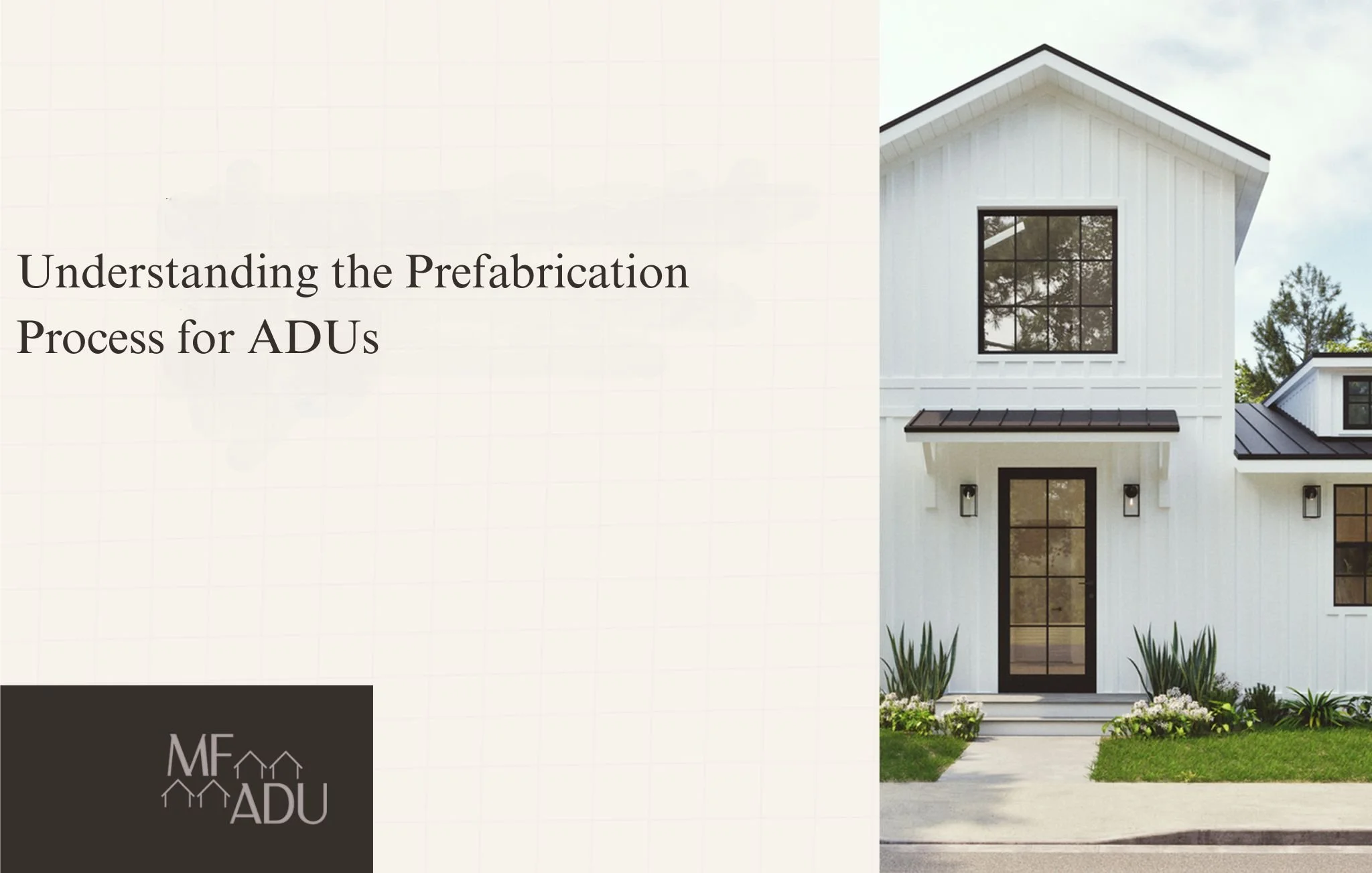Understanding the Prefabrication Process for ADUs
Building an accessory dwelling unit (ADU) no longer needs to be a lengthy or stressful experience. Prefabrication has revolutionized how we design and construct these modern living spaces. At MF ADU, we use a streamlined process that ensures every component is built to precision, resulting in faster installation, higher quality, and lower costs compared to traditional methods.
Step 1: Design and Planning
Every successful prefab ADU starts with a detailed design. During this stage, we work closely with homeowners to customize the layout, materials, and finishes that best suit their lifestyle and property. Once the design is finalized, plans are submitted for permitting—an essential step before fabrication begins.
Step 2: Factory Fabrication
After approvals, the building process moves to a controlled manufacturing environment. Here, components such as walls, floors, and roof panels are produced with precise measurements using high-quality materials. Working indoors protects the project from weather delays and ensures a higher level of consistency and craftsmanship throughout production.
Step 3: Site Preparation
While the ADU is being built in the factory, site preparation happens simultaneously. This includes grading the lot, laying the foundation, and connecting utilities such as plumbing and electrical systems. By working in parallel, we significantly shorten the overall construction timeline—often by several months.
Step 4: Transportation and Assembly
Once fabrication is complete, the prefabricated components are delivered to the site. Our team then assembles them quickly using specialized equipment. Because much of the work has already been done off-site, installation usually takes just a few days, reducing neighborhood disruption and on-site waste.
Step 5: Finishing and Inspection
After assembly, we handle the final touches—installing fixtures, painting, and completing interior finishes. A final inspection ensures that everything meets California’s building standards and energy efficiency codes. At this stage, your ADU is ready for move-in or rental use.
Did you know?
Did you know? Prefabricated ADUs can reduce total construction time by up to 50% compared to traditional builds, thanks to simultaneous off-site fabrication and on-site preparation.
Building the Future with Prefabrication
Prefabrication isn’t just a faster way to build—it’s a smarter way. At MF ADU, we combine design flexibility with cutting-edge manufacturing to deliver ADUs that are efficient, durable, and beautiful. Whether you’re adding space for family or generating rental income, our process ensures your project is completed with precision and care.
Explore our prefabricated ADU models to see how streamlined construction can help you build smarter and faster.
Frequently Asked Questions
How long does the prefabrication process take?
Most prefab ADUs are completed within 2–4 months, depending on design complexity and permitting.
Can I customize a prefabricated ADU?
Yes. Prefabrication allows for flexible design options, including layouts, finishes, and materials.
Is prefab construction more affordable?
Generally, yes. Prefab ADUs reduce labor costs, delays, and material waste compared to traditional builds.
Do prefabricated ADUs meet California building codes?
Absolutely. All MF ADU units meet or exceed California state and local construction standards.
How long does installation take on-site?
Once delivered, most prefab ADUs can be assembled and finished in as little as one to two weeks.


